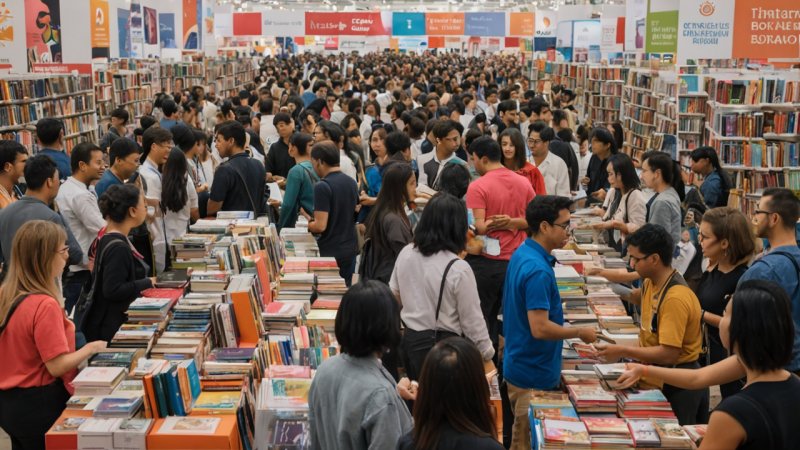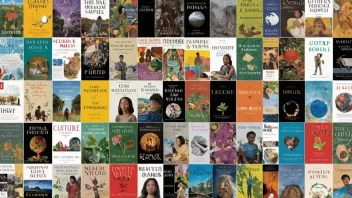International book fairs have become a pivotal element in the global literary landscape, serving as platforms where authors, publishers, agents, and readers converge. These events not only showcase new literary works but also significantly influence which books achieve bestseller status. The dynamics at play within these fairs can propel an unknown title into the hands of eager readers or reinforce the popularity of established works. This article delves into the multifaceted relationship between international book fairs and bestsellers, exploring how these events shape literary trends, foster cultural exchange, and impact the global book market.
The Role of Book Fairs in the Literary Ecosystem
Book fairs serve multiple roles in the literary ecosystem, acting as marketplaces, networking hubs, and cultural showcases. Major events, such as the Frankfurt Book Fair, the London Book Fair, and the Bologna Children's Book Fair, attract thousands of participants and visitors from all corners of the globe. These fairs facilitate the exchange of ideas and encourage collaborations among writers and publishers, which can significantly influence which books rise to prominence.
Networking Opportunities
At book fairs, authors have the opportunity to meet industry professionals, including agents, publishers, and fellow writers. This networking can lead to vital partnerships that can determine a book's success. For instance, an author may attract the attention of a literary agent who can secure a lucrative publishing deal or connect them with influential publishers who can ensure the book reaches a broader audience.
Global Exposure
International book fairs promote cultural exchange and provide authors with access to global markets. Publishers often seek diverse titles that can resonate with various audiences. As a result, books that gain traction at international fairs often enjoy heightened visibility and can achieve bestseller status across different countries. For example, a novel that captures the interest of an international audience may be translated into multiple languages, further broadening its reach.
Key Factors Driving Bestseller Status at Book Fairs
Several factors contribute to the selection of bestsellers during and after international book fairs. These include marketing strategies, author appearances, and the overall atmosphere of the fair, which can create a buzz around specific titles.
Marketing and Promotion
Publishers invest heavily in marketing campaigns surrounding book fairs, utilizing promotional materials, author signings, and special presentations to generate interest. Books that are heavily promoted often attract more attention and can lead to stronger sales figures. Publishers may offer exclusive editions or pre-release copies at these fairs, further incentivizing readers to purchase. Moreover, the presence of influential media outlets covering these events can amplify the visibility of certain titles, contributing to their bestseller status.
Author Appearances and Panels
Author appearances at book fairs play a crucial role in driving interest in their works. When prominent authors participate in panels or give talks, they attract large audiences that can translate to increased sales. For example, if a bestselling author discusses their new book during a panel, attendees may be more inclined to purchase a copy after being captivated by the author's insights and charisma. The buzz generated by these appearances can lead to significant spikes in book sales both during and after the event.
Trends and Themes
Book fairs often reflect current literary trends and themes. Observing which genres and topics are gaining traction can provide insight into what readers are interested in at any given time. Publishers may be more likely to promote titles that align with emerging trends, further influencing which books are deemed bestsellers. For instance, during a fair where themes of social justice are prevalent, books addressing these issues may receive more attention and subsequently achieve bestseller status.
Case Studies of Successful Titles
Examining specific case studies of books that have attained bestseller status following international book fairs provides concrete examples of the influence these events can have.
Case Study 1: "The Night Circus" by Erin Morgenstern
When Erin Morgenstern's debut novel, "The Night Circus," was featured at the Frankfurt Book Fair, it captured the attention of publishers and literary agents alike. The book's unique premise and enchanting writing style led to a bidding war among publishers, resulting in a significant marketing push. Following its release, the novel quickly became a bestseller, aided by the momentum generated at the fair.
Case Study 2: "The Alchemist" by Paulo Coelho
Paulo Coelho's "The Alchemist" is another prime example of how international book fairs can propel a title to bestseller status. Originally published in Portuguese, the book gained international acclaim after being featured at various literary events. Its themes of personal legend and self-discovery resonated with global audiences, leading to translations in multiple languages and millions of copies sold worldwide.
The Future of Book Fairs and Their Impact on Bestsellers
The landscape of book fairs is evolving, particularly in response to technological advancements and changing reader preferences. Virtual book fairs have emerged, allowing for broader participation and access to global audiences. As the industry adapts, the influence of these events on bestseller lists is likely to continue. Publishers will need to innovate their approaches to marketing and distribution, utilizing digital platforms to maximize exposure and reach.
Embracing Digital Platforms
With the rise of eBooks and audiobooks, publishers are learning to leverage digital platforms to complement their presence at physical fairs. Virtual book fairs can cater to audiences who may not have the means to attend in person, allowing for a wider reach. Authors can engage with their audiences through live readings and Q&A sessions, generating interest in their works and potentially leading to sales spikes.
Shifting Reader Preferences
As reading habits evolve, the types of books that achieve bestseller status may also change. Readers are increasingly seeking diverse voices and stories that reflect their experiences. Book fairs will play a crucial role in highlighting these voices and connecting them with readers who are eager for representation in literature. As a result, publishers may focus on promoting diverse authors and themes during these events, which could reshape bestseller lists.
Conclusion
International book fairs are more than just gatherings; they are influential events that can make or break a title in the competitive literary market. By providing networking opportunities, global exposure, and platforms for marketing and promotion, these fairs play a crucial role in determining which books become bestsellers. As the landscape of publishing continues to evolve, the impact of book fairs will likely adapt as well, shaping the future of literature and the reading experience. The ongoing dialogue between authors, publishers, and readers at these events ensures that the love of books and storytelling remains vibrant and relevant.






